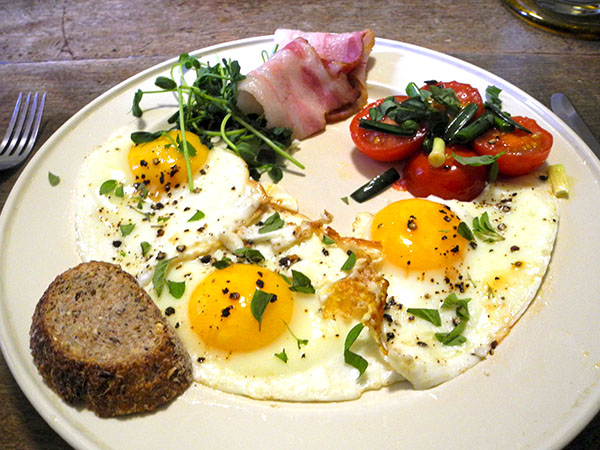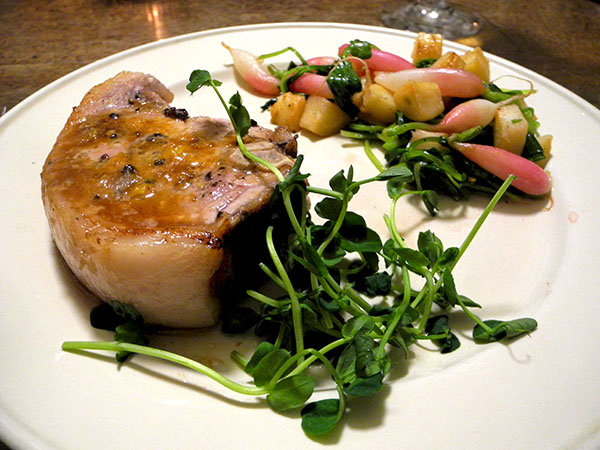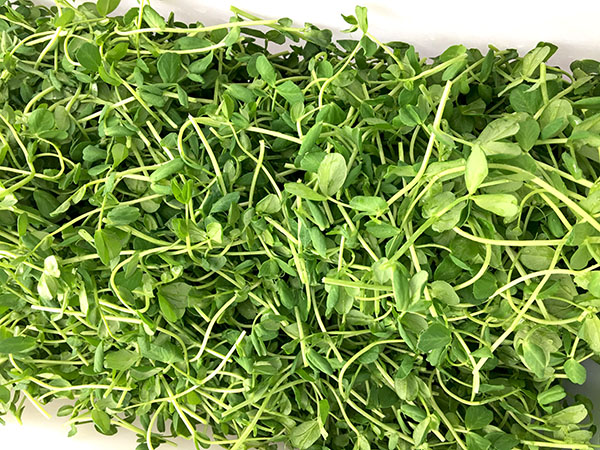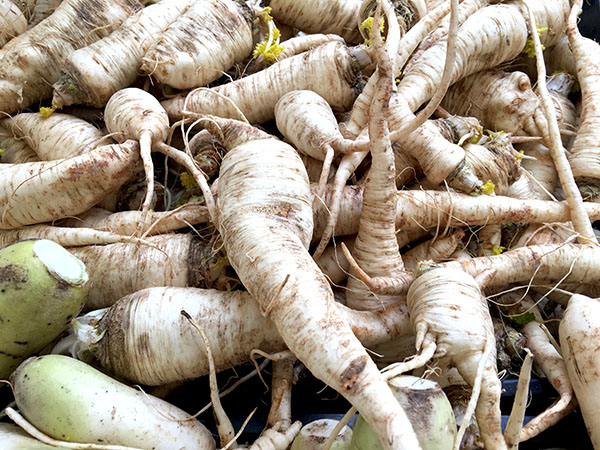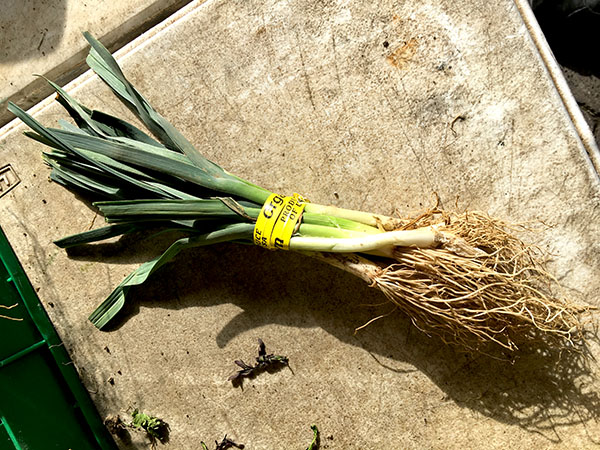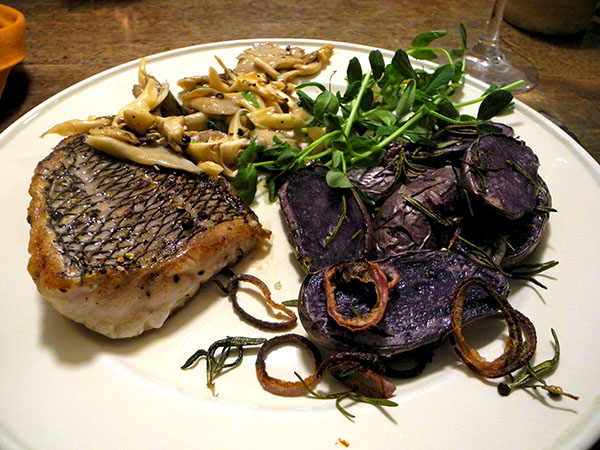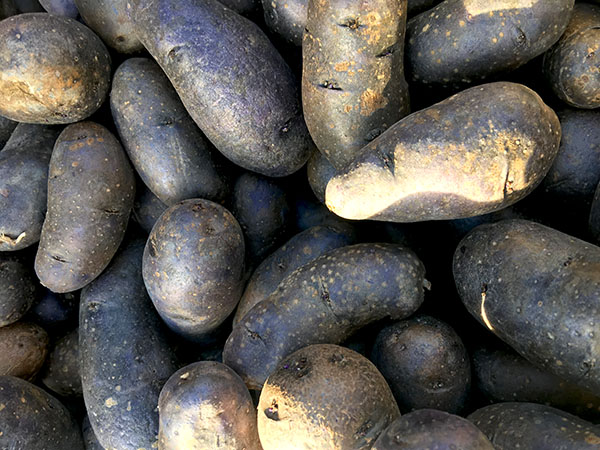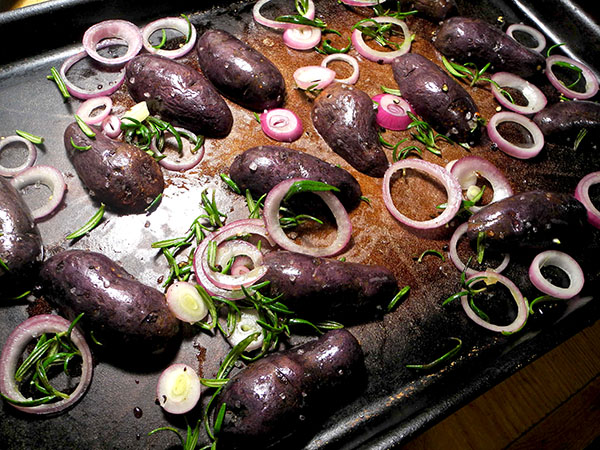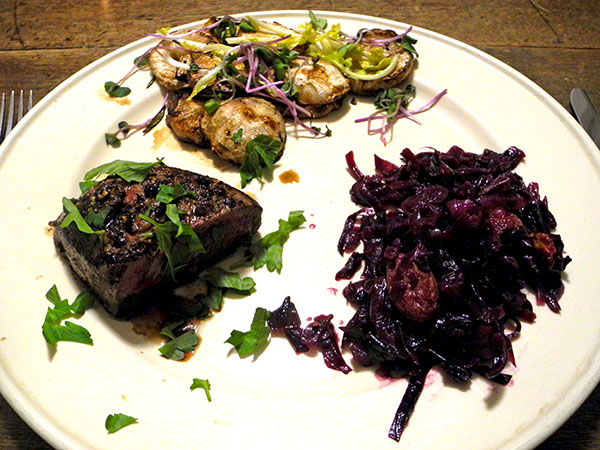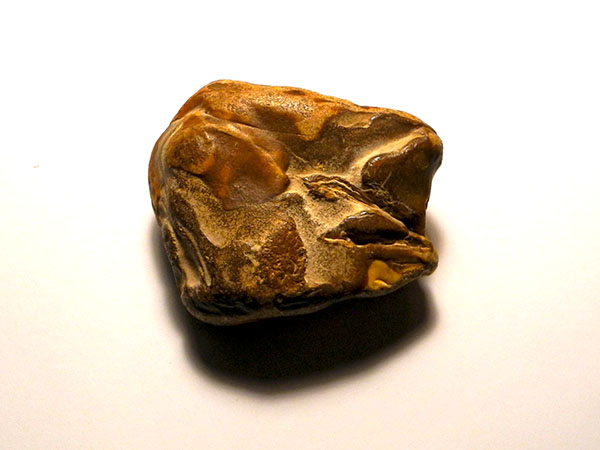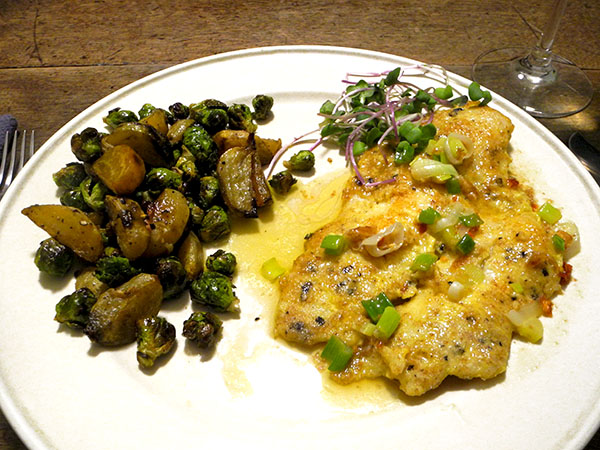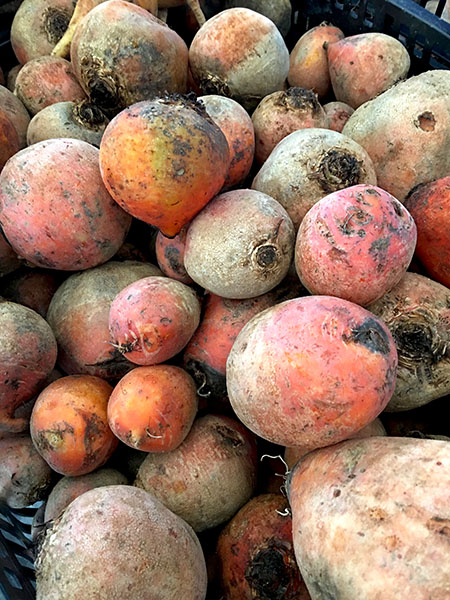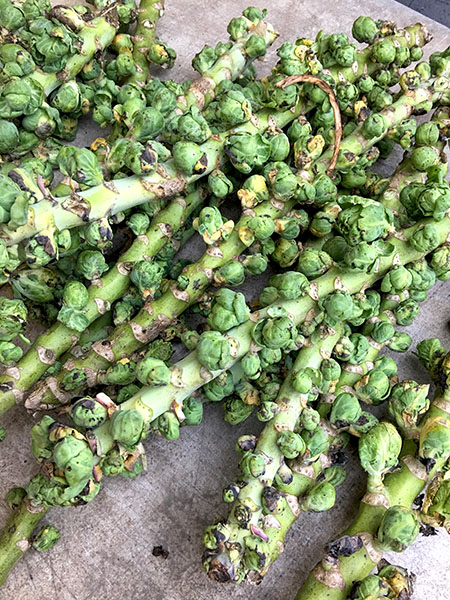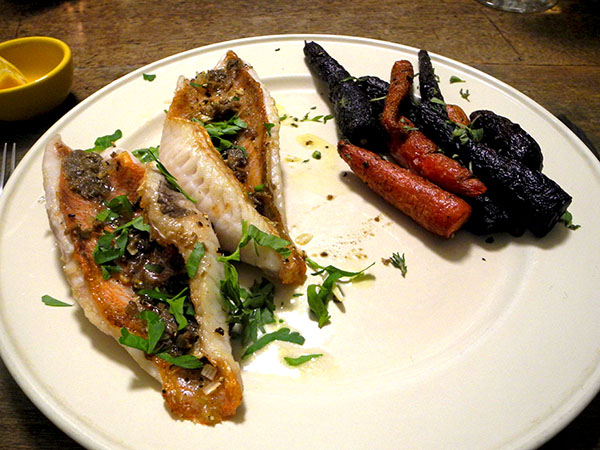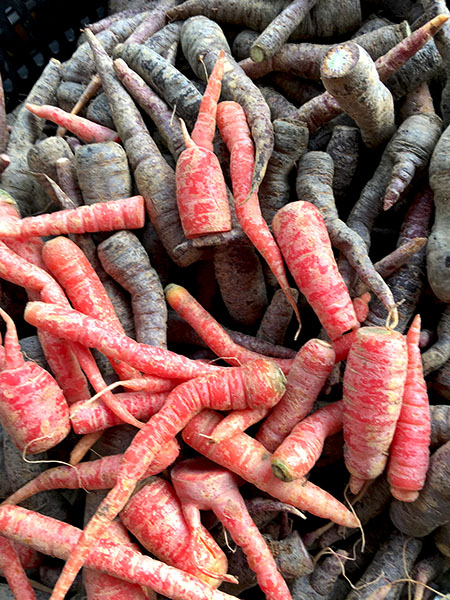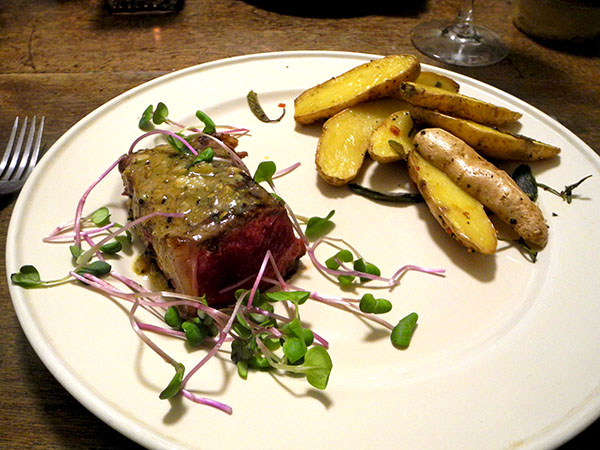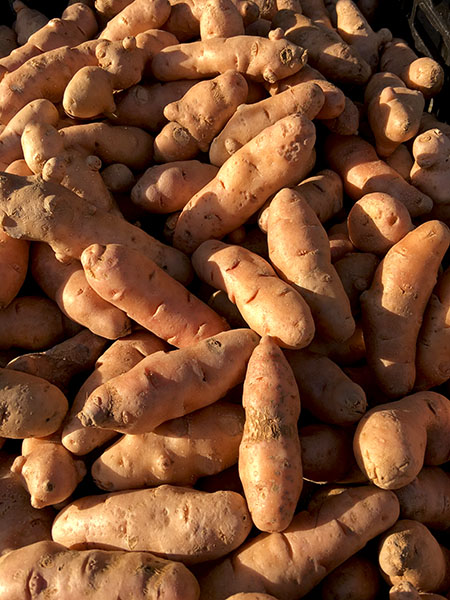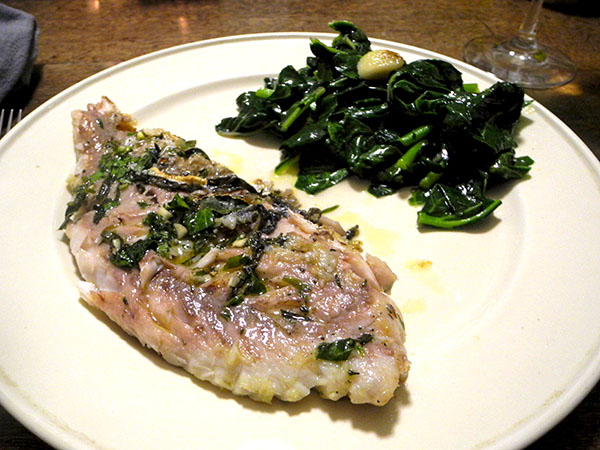
At this point, having already done this basic preparation a number of times, using several kinds of fish, I don’t feel I can write anything that the picture above can’t convey pretty well on its own.
The only thing slightly out of the ordinary about the preparation was that I used 2 different potato varieties, but that was only because I didn’t have enough of the one I had wanted to use because it had been around for a while and was beginning to sprout.
The Carola, in the Greenmarket, when first purchased, 3 weeks ago:
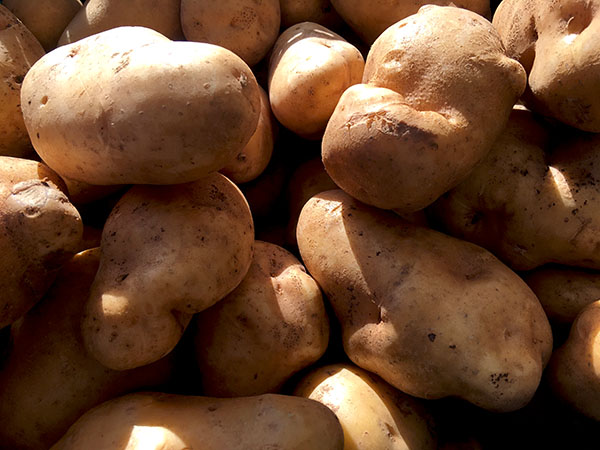
The Dark Red Norland, in the Greenmarket yesterday:
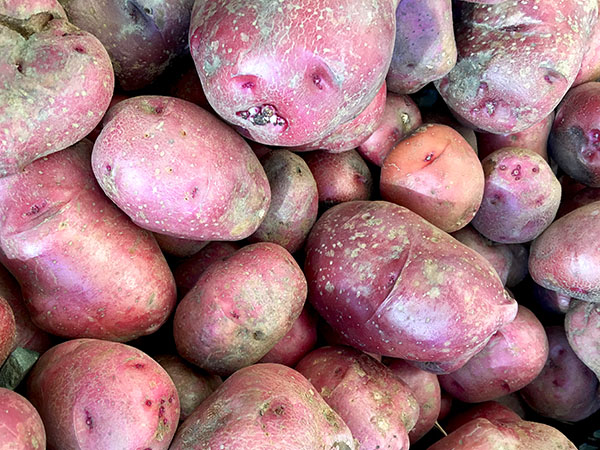
- two 9-ounce cod fillets from Seatuck Fish Company in the Union Square Greenmarket, prepared more or less from a recipe from Mark Bittman which I originally came across almost 12 years ago: the cod washed and rinsed, placed in a platter on a bed of coarse sea salt, more added on top, until they were completely covered, set aside while preparing a bed of potatoes for them by slicing to a thickness of less than 1/4 inch, about 14 ounces of 2 kinds of potatoes, scrubbed but unpeeled, one Dark Norland Red from Norwich Meadows Farm and 2 Carola from Mountain Sweet Berry Farm, tossing them in a large bowl with olive oil, salt, pepper, and a large pinch of golden home-dried Habanada pepper [acquired fresh last fall from Norwich Meadows Farm], arranging the potatoes, overlapping, in a rectangular glazed ceramic oven pan, cooking them for 20 or 25 minutes in a 400º oven, or until they were tender when pierced, meanwhile, before the potatoes had fully cooked, the cod thoroughly immersed in many changes of water in order to bring down the saltiness (incidentally the soaking process somehow gives the fish more solidity, which can be easily felt while handling it at this point), draining and drying the two pieces before placing them inside the pan on top of the potatoes, drizzling them with a little olive oil and scattering some freshly-ground pepper over them, returning the pan to the oven for 8 to 12 minutes (the time would depend on the thickness of the cod), removing the fish with a spatula (or, much better, 2 spatulas) along with as much of the potatoes as can be brought with each piece, and arranging everything, intact if possible, onto 2 plates, returning to the pan for the remainder of the potatoes, snow pea sprouts from Windfall Farms scattered over the top
Its now early February, but I may have more green vegetables in the refrigerator crisper than I can properly handle (aside from herbs and micro greens, there’s Cavalo Nero, Savoy cabbage, radish greens, Japanese scallions, a little leek, a little celery, and collard greens). Last night I used most of a bunch of the beautiful collards I had picked up on Monday.
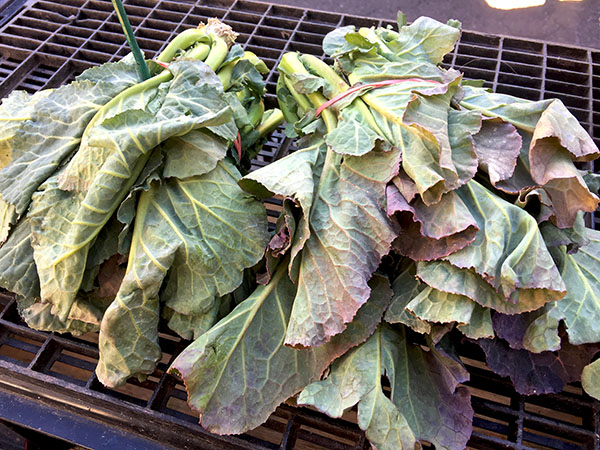
- tender collard greens from Phillips Farm, stripped of most of their stems, torn into small sections, washed several times and drained, transferred to a smaller bowl very quickly, in order to retain as much of the water clinging to them as possible, braised until barely softened inside a heavy oval enameled cast iron pot in which one halved clove of quartered garlic from Lucky Dog Organic Farm had first been allowed to sweat in some olive oil, adding some of the reserved water along the way if necessary, finished with salt, pepper, a little crushed dried Sicilian pepperoncino from Buon Italia, and a drizzle of olive oil
- the wine was a California (Lodi) white, Karen Birmingham Sauvignon Blanc Lodi 2015
- the music was the 1975 Philip Glass/Robert Wilson opera, ‘Einstein On The Beach’, in a new recording with Michael Riesman conducting the Philip Glass Ensemble, the complete list of performers included on the ArkivMusic page
